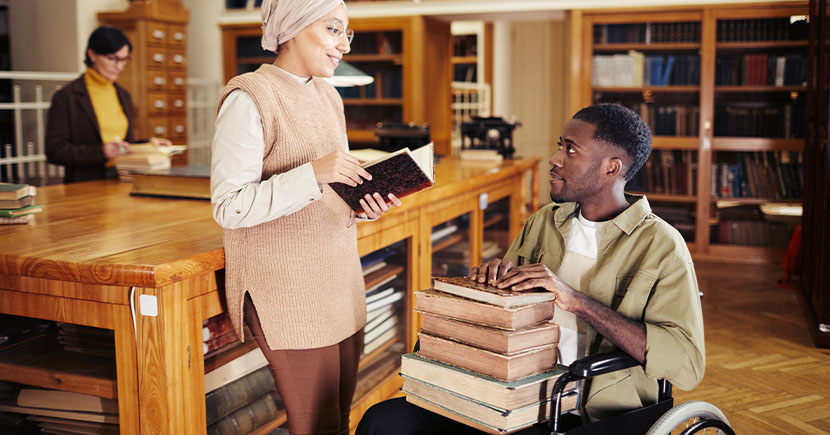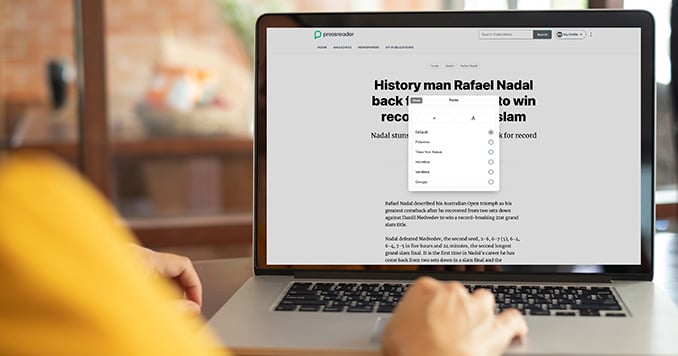Truly great library design has always evolved alongside the needs of patrons.
Once protected information hubs, designed to safeguard important materials and moderate access to them, today's libraries play a much wider range of roles in the community and offer much more than books. They’re maker spaces, business centers, tech hubs, forums for civic dialogue and preservers of cultural history.
When COVID-19 hit, for example, library teams became first responders and important connectors at a time of increased social isolation. The pace of change in the past decade alone has shown how much a library’s purpose and value to society can shift in just a short period of time. Consequently, a library's design must continue to evolve.
As library experts look to modernize existing libraries and build innovative new library spaces, they can’t simply focus on present-day needs. Rather, they’ll need to consider how the design and construction of our libraries can evolve over time.
We spoke with Elif Tinaztepe, a partner and design principal at Schmidt Hammer Lassen Architects, about how to improve library design.
With offices in Denmark and China, the firm is a leader in modern library architecture. SHL has designed notable institutions around the world, including Dokk1 in Aarhus, University of Bristol Library, Halifax Central Library, and State Library Victoria in Melbourne.
Tinaztepe shared her knowledge of designing spaces for longevity within the library, even in the face of budget cuts, creative constraints and evolving demands. We’ve distilled her observations into five strategies for achieving great library design.
See also:
-
The evolution of public libraries to the 21st century: an illustrated timeline
-
The library of 2030: what to expect from changes to physical design
Ask your community about what makes a great library

An important step in designing libraries is cultivating a sense of shared ownership with the communities they serve. This means giving community members opportunities to shape the space alongside the library team.
“If librarians start by understanding their patrons’ core needs, they can have a major impact on the health of their communities,” says Tinaztepe. “Spaces can be modified and staged by the users themselves intuitively or according to what their needs are.”
When Schmidt Hammer Lassen Architects designed Tūranga, the central library in Christchurch, to help revitalize the city and its community after four major earthquakes, they worked closely with Ngāi Tūāhuriri, the local Māori people.
“It was really about their rituals, the way they meet and greet each other, and the way they celebrate together. That informed the programmatic layout of the building,” says Tinaztepe. “They told us that the sound of kids playing and laughing is the sign of a healthy building. We tried to bring that very close to the ground floor entrance so you could be immersed in that as you entered the library.”
Designing around these natural interactions meant that the building would feel more intuitive for the people using it every day.
While this informed the design direction of the entire project, regular consultations with your community can inspire smaller-scale changes as well. What does your community need? How can you transform an existing space into an environment that meets this need?
Allow adaptation and flexibility
Tinaztepe encourages us to expect — and allow — individuals to make the library their own.
“We have a saying, ‘If it has legs, it will walk,’” she says, referring to the way patrons will move furniture or modify the layout to suit their needs. “It’s important for us as architects to create a design that’s generous, that can allow that without losing its identity.”
With this approach, you create a fluid landscape that can ebb and flow from one day to another, from morning to evening. By giving guests the autonomy to co-create the space, you’ll observe a natural evolution of the use of the library and find inspiration for future purposes for items and spaces.
Encourage well-being and inclusivity

Many libraries are already ahead of the curve when it comes to environmental sustainability, particularly in light of the UN’s Sustainable Development Goals.
Tinaztepe reminds us that great library design should also support individual and societal health and well-being. The library is a place to learn, to work and to meet others, but it’s also a place to just be.
“How might we design safe and welcoming meeting spaces to support gender equality? Spaces where regardless of ability or disability, everybody has the same level of quality of experience? … Can we also support mental fitness in the way we design spaces, with the way we bring daylight in, with the way we make it comfortable and safe for people?”
Consider sensory design and materiality as well. “As designers, we think of acoustics almost as landscapes of their own," Tinaztepe says. This can change throughout the building. Perhaps you have areas of collaboration, and you facilitate a natural buzz with communal seating or programming nearby. Then perhaps you can move to a place that becomes naturally quieter simply due to the proportions of the space.
“There are things that we can also do with lighting, which is very important in Scandinavia," Tinaztepe says. "We're just about to change the clocks and everything's going to be dark for so many months. It's really channeling daylight when we can. Working with artificial lighting can create zones that invite certain types of activities. You can also build flexibility in that zoning… Think of the whole library landscape as one big stage that can change depending on what you want to use this space for.”
Blend digital and analog experiences

We consume information in both online and print formats — and cutting-edge libraries should address this post-digital reality, where library guests want options.
“For the new generations, moving from analog to digital is not a big deal," Tinaztepe says. "It's just a path they choose, and they choose the path that suits the format that they're looking for. So as architects, we work a lot with that.”
Consider the new public library ideas that arise from merging digital technology and analog experiences. You can pair a digital newsstand experience, like PressReader, with thoughtful physical design.
For instance, Vimmerby Public Library in Sweden (not an SHL design) created a PressReader-branded bench that sits outside the library and gives visitors access to free WiFi and online services in a comfortable setting.
“I think when digital space is occupying so much of our everyday reality, it is incredibly important to design physical spaces that have a tactility and materiality, a physicality to them that move us or make us happy and delight us,” says Tinaztepe. “I think that sense of beauty, being uplifting and inviting patrons to be curious is very important.”
Innovate within the space you have
Tinaztepe acknowledges that libraries have finite budgest for the investment they can make in design. She suggests choosing certain spaces within the library that can be programmed for a variety of purposes, rather than thinking you have to be flexible everywhere.
“One will never have the funds and the staff and resources to be able to change everything," she notes. "Decide the few places that you're going to be 100% flexible in the library, that you can change fully and that can lend themselves to specific activities. This provides a playground for library staff to generate new programs and inspires them to do new things.”
Great libraries have always been resilient and adaptable — their continued evolution is a testament to this. These five key strategies offer a framework to build upon that resilience, fostering inclusivity, creativity and innovation in the design of future libraries for years to come.










